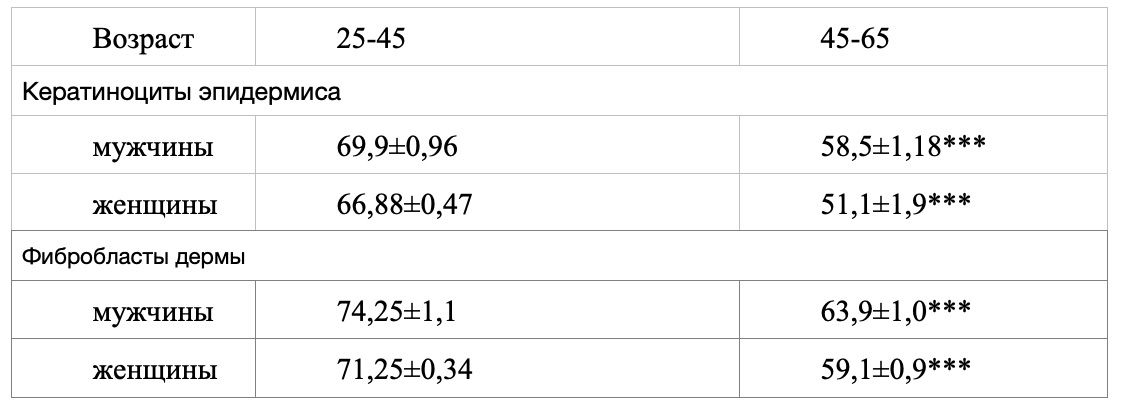Введение
Сегодня нет никаких сомнений в том, что развитие науки связано с новыми технологиями, которые интегрируются в самые сложные формы деятельности человека, в том числе медицинскую науку и ее отдельный сегмент – дерматологию, как науку, изучающую кожу.
Образуя обширную область контакта с внешней средой и представляя собой важнейшую барьерную ткань, ограничивающую внутреннюю среду организма, кожа человека исторически сформировалась в самостоятельный орган иммунной системы, зачастую являясь плацдармом реализации ее механизмов реагирования. Кроме того, обладая многообразием иммуннокомпетентных клеток, кооперирующихся между собой как с помощью комплементарных структур на поверхности, так и при участии иммунорегуляторных цитокинов, организация кожи позволяет ей участвовать в иммунных реакциях всего организма, при этом осуществляя некоторые иммунологические процессы самостоятельно, in situ.
Клеточный субстрат иммунной компетентности кожи представлен резидентными и рециркулирующими клетками костномозгового происхождения. К резидентным клеткам относятся тучные клетки, клетки Лангерганса, кератиноциты, эндотелиальные клетки, фибробласты, моноциты (макрофаги). Рециркулирующими являются лимфоциты и гранулоциты, причем есть мнение, что лишь определенные типы лимфоцитов способны поселяться в коже. Следует отметить, что первым концепцию лимфоидной ткани, ассоциированной с кожей (SALT – от Skin-Associated Lymphoid Tissue), сформулировал J.W. Streinlein, который объединил этим понятием эпидермис, тропные к нему T-лимфоциты, сами кератино- циты, а также дренирующие эпидермис лимфатические узлы [3].
Однако ранее к иммунной подсистеме кожи доказательно относили иммунологически значимые клетки, локализованные, главным образом, в дерме – тучные клетки, макрофаги, гранулоциты, эндотелий кровеносных и лимфатических сосудов и др. [4].
Приняв тот факт, что кожа представляет собой активный иммунный орган, так как резидентные и рециркулирующие клетки эпидермиса и дермы способны не только инициировать иммунные процессы, участвовать в них, но и определять состояние кожных покровов, это может быть оценено в ходе осмотра [6, 7].
Визуально состояние кожных покровов может оценить любой человек, основываясь на собственных знаниях. Оценка врача более точна, по сравнению с обывателем, но она все же субъективна и зависит от опыта, стажа работы, количества пациентов. В связи с этим актуализируется потребность в методах оценки состояния кожных покровов. Сегодня для этого используется ряд методов определения функций и свойств кожи. Они безопасны, безболезненны, комфортны и дают возможность многократного проведения процедуры обследования и анализа. К таковым методам относятся: корнеометрия, себуметрия, кутометрия, профилометрия [1]. Кроме того, для оценки внутренних структур кожи применяют инвазивные (гистология) и неинвазивные (оптическая когерентная томография, ультразвуковая микроскопия, магнитно-резонансная томография) методы [5].
Однако существенным их недостатком является дороговизна, недоступность, а также невоз- можность оценить клеточный состав кожи и ее функциональность [8]. Перечисленные методы, описывая ряд свойств кожи, не учитывают того, что кожа – экзоорган, на который постоянно действует окружающая среда и в котором постоянно происходит сложный комплекс межклеточных взаимодействий [9].
При этом на протяжении всего периода изучения кожи было и остается актуальным изучение фенотипа клеток ее составляющих.
Актуальным остается изучение роли хемокинов и соответствующих им хемокиновых рецепторов в патогенезе хронических заболеваний кожи [2]. Но сложность исследований обусловлена прочными десмосомальными связями клеток, препятствующими их разделению и изучению в живом виде и по отдельности.
Мы говорим о коже как о целостном органе, но состоящем из множеств и подмножеств клеток, выполняющих соответствующие их предназначению функции, понимание значения каждой из которых возможно только при определении вне отношений с другими клетками. Если бы это было возможным, то такие врачебные специальности, как дерматология и косметология, получили бы ответы на вопросы: возможна ли объективная оценка динамики заболевания кожи и как оценить степень реагирования кожи на воздействия среды, какова функциональная активность клеточных субпопуляций кожи в условиях нормы и патологии и каковы критерии возрастных изменений кожи, насколько эффективно применяемое наружное лекарственное средство и возможен ли строго индивидуальный подбор лекарственного препарата для наружного применения или косметики?
История дерматологии помнит массу попыток преобразовать кожу человека – плотную ткань в жидкость.
Поиск способа разделения клеточного субстрата кожи для получения суспензии и изучения фенотипа клеток, входящих в ее состав, стал основой многолетнего исследования, результатом которого явился патентованный способ цифровой оценки субпопуляционного состава клеток кожи – цитоиммунограмма кожи (Патент на изобретение No 2630607 от 11.09.2017).
Именно так называется изобретение, признанное практикоориентированным и перспективным для внедрения в систему общественного здравоох- ранения резолюцией «Х международной конференции иммунологов Урала», на которой впервые был представлен доклад о «Перспективах применения цитоиммунограммы кожи».
Изобретение относится к биологии и медицине и может быть использовано для определения субпопуляционного состава клеток кожи и получения цитоиммунограммы кожи. Общеизвестно, что клетки кожи соединены друг с другом десятками, сотнями, а может и тысячами отростков, крепко-накрепко спаивающих клетки в плотный конгломерат, и разделение их для помещения в жидкость, влечет разрыв мембран и грозит клеткам гибелью. Но для определения функции клетки исследователям нужны живые и только живые клетки.
Удалось создать такие условия, при которых клетки кожи, разделенные между собой и приведенные в состояние суспензии, остаются жизнеспособными на 90-99%.
А, следовательно, суспензию клеток кожи можно изучать (качественно, количественно), тестировать in vitro эффективность различных лекарственных препаратов, а в условиях криобанка еще и хранить весь субпопуляционный состав клеток индивидуального образца.
















